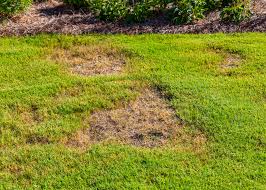Fertilizing your lawn is supposed to make it greener, thicker, and healthier. So it can be alarming when the opposite happens—your grass starts thinning or even dying. If you’re noticing lawn thinning after fertilizing, don’t panic. You’re not alone, and there are practical steps you can take to bring your lawn back to life.
In this blog post, we’ll explore why your lawn might be thinning, how to identify the signs of fertilizer damage, and what to do to repair thinning grass quickly and effectively.


Common Causes of Lawn Thinning After Fertilizing
There are several reasons why your lawn may look worse after fertilization. Understanding the cause is the first step toward recovery.
1. Overfertilization (Fertilizer Burn)
One of the most common culprits is applying too much fertilizer. This can lead to “fertilizer burn,” where the excess salt in synthetic fertilizers dehydrates the grass. You’ll often see yellow or brown patches followed by thinning.
2. Wrong Type of Fertilizer
Not all fertilizers are created equal. Using the wrong blend—especially one high in nitrogen—on the wrong type of grass can lead to weak growth and thinning.
3. Improper Application
Uneven application or fertilizing during the wrong season can cause uneven growth and bare spots. For example, fertilizing cool-season grass during peak summer heat can stress the lawn.
4. Underlying Soil Issues
Sometimes, the fertilizer just reveals deeper issues such as compacted soil, poor drainage, or nutrient imbalances. These can all contribute to a thinning lawn.
5. Environmental Stress
Heatwaves, drought, pests, or disease can coincide with fertilization and give the impression that the fertilizer is to blame when it’s actually environmental stress making the lawn thin out.
Signs of Fertilizer Damage or Thinning
If your lawn is thinning after fertilizing, look for these symptoms:
Yellowing or browning of grass blades
Patches of dead grass
Soil crusting or white salt buildup
Stunted or uneven growth
Wilted or limp grass, even with adequate watering
How to Revive a Thinning Lawn After Fertilizing
Once you’ve identified the issue, it’s time to take action. Here’s how you can bring your lawn back to full health.
1. Water Thoroughly and Regularly
If you suspect overfertilization, water your lawn deeply and frequently for the next few days. This helps flush out excess salts and minimize further damage.
Water early in the morning
Apply 1 inch of water every few days
Avoid watering at night to reduce fungal risks
2. Mow High and Often
Keep your mower blades high (3-4 inches) and mow regularly. Longer grass shades the soil, keeps roots cooler, and encourages deeper root growth.
3. Aerate the Lawn
Aerating helps relieve soil compaction and improves the movement of water and nutrients to the roots. Fall and spring are ideal times for this.
Use a core aerator for best results
Focus on areas with heavy foot traffic or visible compaction
4. Add Organic Matter
Incorporate compost or organic soil amendments to restore microbial life and balance nutrient levels. This helps the grass bounce back more naturally.
5. Reseed Bare or Thin Areas
If parts of your lawn are beyond recovery, overseeding can help.
Choose a seed blend appropriate for your climate and grass type
Lightly rake in the seed, water consistently, and avoid heavy foot traffic during germination
6. Apply a Gentle, Organic Fertilizer
Once the lawn shows signs of recovery, apply a mild, slow-release, or organic fertilizer to promote healthy growth without risking another burn.
Preventing Future Lawn Thinning
Maintaining a lush, healthy lawn requires a balanced, long-term approach. Here’s how to keep thinning from happening again:
Test your soil every 1–2 years to understand its nutrient profile
Use the right fertilizer for your grass type and follow recommended application rates
Fertilize during optimal times: early spring and fall for cool-season grasses, late spring and summer for warm-season varieties
Water properly, especially during dry spells
Avoid heavy foot traffic on recently fertilized or seeded areas
Final Thoughts
A thinning lawn after fertilizing can be disheartening, but it’s often a temporary setback. With proper care and a little patience, you can revive your lawn and restore its health. By diagnosing the issue early and following the steps above, your grass will return stronger and greener than before.
If you’re ever in doubt, consult a local lawn care professional or extension service for advice tailored to your region and grass type. Your lush, green lawn is just a few smart steps away!


